I have a weak spot for variegated yarns.
We have a love-hate relationship because those yarns can be very difficult to work with.They can pool in funny ways. They easily obscure patterns.
And yet I love them still.
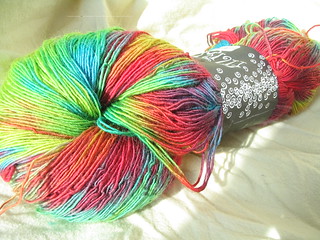 |
| rainbow goodness |
So what is one to do?
Learn how to work with them.
Play with variegated yarns.
Know the limits of the yarn.
And be ready to frog and use a different yarn for a project.
Slipped stitches and twisted stitches usually work well for breaking up the potential pooling and for standing out.
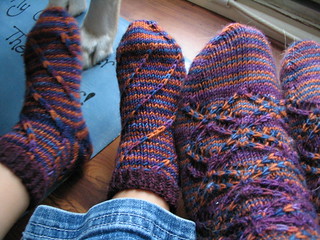 |
| Twisted stitches |
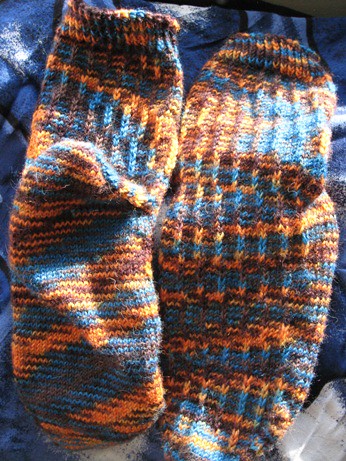 |
| Simple slipped stitches |
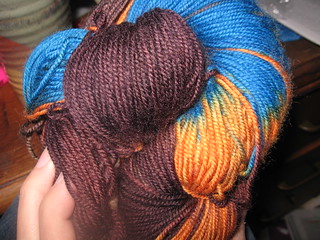 |
| Variegated goodness |
Perhaps you wonder what possibilities exist for variegated yarn. Perhaps you have experienced how easily a stitch pattern (especially lace) can be obscured by variegated yarns. I've outlined some of my ideas recently for Annie Bee's Colour Riot series when discussing rainbow yarns. Using a second, solid colour and striping or holding it double helps to subdue some crazy variegation. Keeping things simple with "plain" stitches is good too. But other times you want to play with stitches.
Perhaps it's time to play with a sampler.
That's what I did a while ago. I didn't see much use for the leftover orange-blue-brown yarn I had after knitting socks, so I decided to test out some different stitch patterns with variegated yarn.
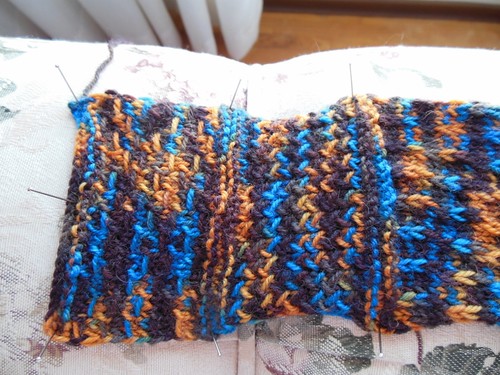
1 2 3
NOTE: These stitches primarily come from my stitchionary, which is an old Mon Tricot book half fallen apart that I inherited.
L-R: 1) Stranding with yarn held in front over 2 slipped stitches and alternating where one starts the stranding. The stranding makes those colour sections pop. You could do random stranding in this way on an otherwise stockinette body.
2) Right side worked as [sl,k,yo,psso]. You could space the repeat with some plain K columns for a ribbed effect too.
3) Alternating columns of slipped stitches with 2sts K, 1 slipped. This would be the same pattern used in the socks above in this yarn.

2 3 4 5
L-R: patterns 2 and 3 visible.
4) Granite stitch (K2tog across R2; Kfb across R3)
5) Wheat germ (spaced out rows of K1, K1b) - nice subtle way to break up pooling
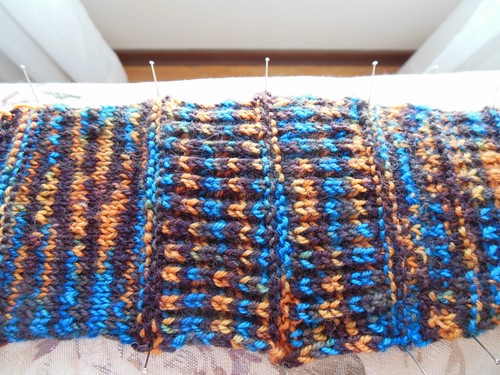
5 6 7 8
L-R: 5)Wheat germ
6) Brioche (knit on a smaller needle because it creates a much looser fabric)
7) "fake" brioche, which is actually a K1Below ribbing (K1, K1b) that my stitchionary calls brioche. Since I know it's not true brioche, I call it "fake". Certainly it has a similar look.
8) Grain of powder
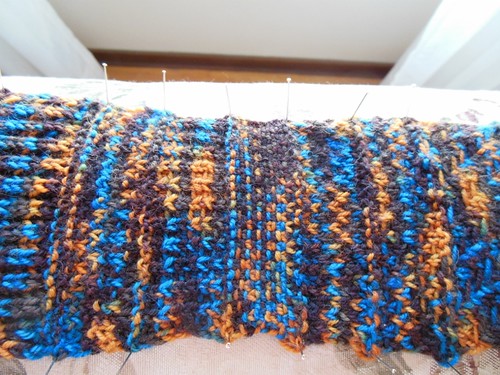
7 8 9 10 11 12 13
L-R: 7) K1Below ribbing
8) Grain of powder
9) Woven rib
10) Linen
11) Eye of Partridge
12) Tweed

12 13 14 15 16
L-R: 12) Tweed
13) Diagonal tweed
14) Diagonal crossed stitch
15) Bamboo
16) Knotted
As you can see, I worked with a lot of stitches that weave the yarn, pass slipped or YO stitches over, knit below, and occasional purls. There are so many more open styled stitches I could have tried as well (and have tried while trying to figure out what is in this sampler). Another sampler is clearly in order.

No comments:
Post a Comment